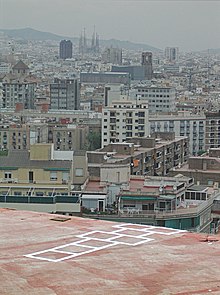کمدی سیاه
کمدی سیاه یا کمدی تلخ (انگلیسی: Dark comedy; Black comedy)[۱] همچنین طنز سیاه یا طنز بیمارگونه (انگلیسی: Black humor; Morbid humor)[۲][۳][۴] سبکی از کمدی است که در آن موضوعات تابو، بهویژه آنهایی که برای بحثکردن جدی یا دردناک تلقی میشوند، جدی گرفته نمیشوند. نویسندگان و کمدینها اغلب از این زیر-ژانر به عنوان ابزاری برای کشف مسائل مبتذل با برانگیختن ناراحتی، تفکر جدی و سرگرمی برای مخاطبان خود استفاده میکنند؛ از اینرو اصطلاح کمدی سیاه میتواند برای مثال در ادبیات داستانی، به ژانری نیز اشاره کند که در آن طنز سیاه جزء اصلی آن باشد. به عنوان برخی از مضامین محبوب این ژانر میتوان به مرگ، جنایت، فقر، خودکشی، جنگ، خشونت، تروریسم، تبعیض، بیماری، نژادپرستی، تبعیض جنسی، جنسیت انسانی و بسیاری موارد دیگر اشاره کرد.

کمدی سیاه با کمدی آبی—که بیشتر بر موضوعات خامی مانند برهنگی، آمیزش جنسی و مایعات بدن تمرکز دارد—و با وقاحت متفاوت است. در حالی که اصطلاح کمدی سیاه یک اصطلاح نسبتاً گستردهاست که طنز مربوط به بسیاری از موضوعات جدی را پوشش میدهد، طنز چوبه دار بیشتر در رابطه با مرگ یا موقعیتهایی که یادآور مردن هستند استفاده میشود. طنز سیاه گاهی میتواند به ژانر گروتسک مرتبط شود.[۵] منتقدان ادبی کمدی سیاه و طنز سیاه را با نویسندگانی از همان اوایل یونان باستان با آریستوفان مرتبط میدانند.[۶][۷][۸][۹][۱۰][۱۱][۱۲]
جستارهای وابسته
ویرایشمنابع
ویرایش- ↑ «کمدی سیاه» [هنرهای نمایشی] همارزِ «black comedy»؛ منبع: گروه واژهگزینی. جواد میرشکاری، ویراستار. دفتر هفتم. فرهنگ واژههای مصوب فرهنگستان. تهران: انتشارات فرهنگستان زبان و ادب فارسی. شابک ۹۷۸-۹۶۴-۷۵۳۱-۹۴-۸ (ذیل سرواژهٔ کمدی سیاه)
- ↑ Bloom, Harold (2010) Dark Humor, ch. On dark humor in literature, pp.80–88
- ↑ Dark Humor. Edited by Blake Hobby. Chelsea House Press.
- ↑ "Black humour". britannica.com. Retrieved April 15, 2018.
- ↑ Merhi, Vanessa M. (2006) Distortion as identity from the grotesque to l'humour noir
- ↑ Dark Humor. Edited by Blake Hobby. Chelsea House Press.
- ↑ "Black humour". britannica.com. Retrieved April 15, 2018.
- ↑ Garrick, Jacqueline and Williams, Mary Beth (2006) Trauma treatment techniques: innovative trends pp.175–6
- ↑ Lipman, Steve (1991) Laughter in hell: the use of humor during the Holocaust, Northvale, N.J:J Aronson Inc.
- ↑ Kurt Vonnegut (1971) Running Experiments Off: An Interview, interview by Laurie Clancy, published in Meanjin Quarterly, 30 (Autumn, 1971), pp.46–54, and in Conversations with Kurt Vonnegut, quote:
The term was part of the language before Freud wrote an essay on it—'gallows humor.' This is middle European humor, a response to hopeless situations. It's what a man says faced with a perfectly hopeless situation and he still manages to say something funny. Freud gives examples: A man being led out to be hanged at dawn says, 'Well, the day is certainly starting well.' It's generally called Jewish humor in this country. Actually it's humor from the peasants' revolt, the forty years' war, and from the Napoleonic wars. It's small people being pushed this way and that way, enormous armies and plagues and so forth, and still hanging on in the face of hopelessness. Jewish jokes are middle European jokes and the black humorists are gallows humorists, as they try to be funny in the face of situations which they see as just horrible.
- ↑ Bloom, Harold (2010) Dark Humor, ch. On dark humor in literature, pp.80–88
- ↑ Freud (1927) Humor